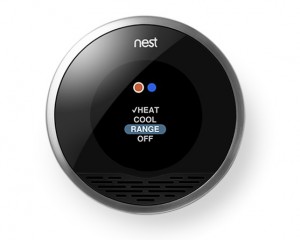(sorry: WordPress and I didn’t agree on the formatting for this entry, and WordPress wins!)
Postscapes‘ annual Best of the IoT contest wraps up on the 30th, so don’t miss your chance to vote for last year’s best IoT products! You owe it to yourself to check out all the nominees: it will give a good overview of how the state-of-the-IoT has evolved, especially when you go back and compare the winners from the past two years.
 Here are my personal choices in the various categories, and my reasons for choosing them — the primary criterion being my friend Eric Bonabeau‘s perennial question of new technology, “what can you do now that you couldn’t do before?”
Here are my personal choices in the various categories, and my reasons for choosing them — the primary criterion being my friend Eric Bonabeau‘s perennial question of new technology, “what can you do now that you couldn’t do before?”
- Connected Home: I vote for the Mother smart home hub (probably because she looks like something from a Wallace & Gromit short..), cute, efficient, and open source (the leading vote-getter in this category is the iAquaLink pool control system: pardon my doubts, but there ain’t no way any automation system could control my pool: it’s basically a law unto itself!)
- Connected Body: Libelium Open Source e-Health Sensor Platform Libelium does such great work in general, and this one is, to my knowledge, the most all-encompassing Quantified Self monitoring system, monitoring, with 10 different sensors: pulse, oxygen in blood (SPO2), airflow (breathing), body temperature, electrocardiogram (ECG), glucometer, galvanic skin response (GSR-sweating), blood pressure (sphygmomanometer) and patient position (accelerometer). I think it was Dave Evans who said that 30% of all docs will retire in the next decade, while the number of senior/Boomers will increase exponentially. The only way we’ll be able to cope is by making it easy for doctors to know what’s happening with us — in real time!
- Smart City: On the day we mark environmental activist Pete Seeger’s death, what better than the open-source, crowd-funded Smart Citizen Kit, which empowers citizen activists to monitor environmental conditions! Power to the people, right on!
- Enterprise: The HyGreen Hand Hygiene Monitoring System. As I remarked before about a competing system, this is personal, because my cousin acquired a terrible Hospital Acquired Infection. Hand-washing is an absolutely critical hospital procedure, but until now we lacked a fool-proof method to make sure it was done!
- Technical Enabler: Thingworx expanded their offerings this year with the Thingworx Marketplace, providing developers ..”with the necessary building blocks to rapidly build innovative applications that integrate those connected devices with business systems, social and cloud services, and external systems, enabling them to drive value in the connected world.”
- Social Impact: OK, I’ll admit a soft spot for any reformer, so I count all these as “winners.” But the one that really caught my I was the Natalia Project, a wristband that alerts people if human rights workers are endangered. Here’s the story:”In 2009, human rights activist Natalia Estemirova was kidnapped and later found murdered in Chechnya. In part of honoring her and the incident the Swedish organization Civil Rights Defenders is launching the Natalia Project. At the heart of the idea lies a GPS and GSM equipped wristband that when triggered or is forcibly removed will send out an alert and location information to warn that its wearer could be in danger.”
- Networked Art: as the page says “Artists are often the first to see the potential in new technologies, even before those technologies are mature enough to be used to the consumer” (hmm, don’t think that’s what he meant to say, but you get the drift..) — and don’t forget the Arduino board came from a design school! My choice — hey, why not? — is Alex Kiesling’s “Long-Distance Art” — but the other ones look kewl too!
- Design Fiction: I’m going to pass on this one! I must be a little too literally minded!
- DIY Project: oooh: this harkens back to my “Data Dynamite” book, on liberating data! Here’s the description of my winner, the Data Sensing Lab:
“Hardware hacking for data scientists”. By deploying custom wireless hardware at tech conferences like Strata and Google I/O the team is looking to advance what real-time sensor network data collection, analysis, and visualizations will look like in the near future.“We will soon begin to move in a sea of data, our movements monitored and our environments measured and adjusted to our preferences, without need for direct intervention. What will this look like? How can we create and shape it? How can we introduce the relevant hardware to people who already possess data analytics skills?”
- Open Source: in many ways, the most important category of all, since without open standards the IoT just ain’t gonna go anywhere. I’m embarrassed that I hadn’t heard of it, but my choice in this category is Alljoyn. As the description says, “AllJoyn is an open source project that provides a software framework and set of Services that enable interoperability among connected products and software applications, across manufacturers, to create dynamic proximal networks. By integrating the AllJoyn framework codebase, manufactures can offer interoperable products and services that will engage and delight users in new, exciting and useful ways.” Yep.
- Startup of the Year: I see Evrythng as a critical IoT marketing tool.
- Must-Follow Company: I’d go with Libelium: they’re so ubiquitous and partner so well with so many.
So those are my choices — some are rather arbitrary because there are no so many promising IoT companies. Who are you voting for, and why??


